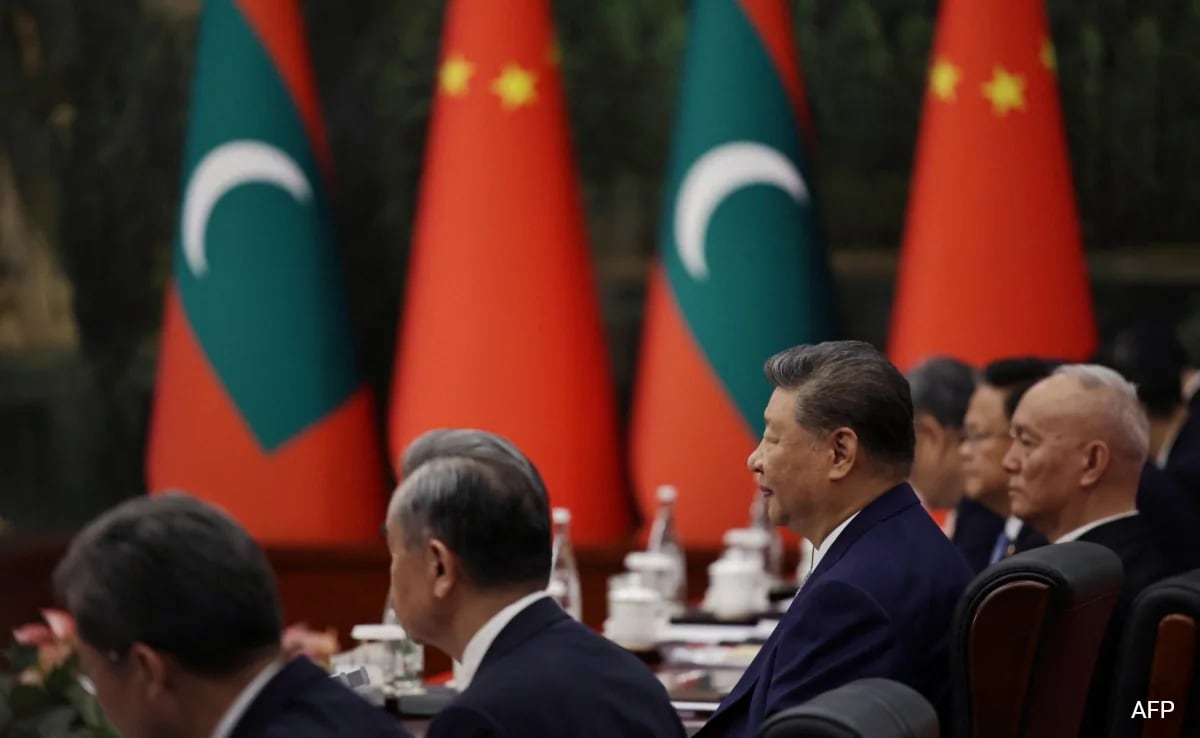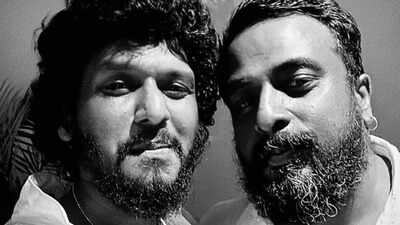As the 2025 college football season begins, Awful Announcing sat down with Fox Sports lead college football analyst Joel Klatt ahead of a sold-out taping of his eponymous podcast on Ohio State’s campus Thursday night (where a fan got a predictive OSU repeat championship tattoo live on stage).
Thanks to both his podcast and his well-loved work in the broadcast booth alongside Gus Johnson, Klatt has established himself as one of the primary voices of authority on college football in recent years. We had a wide-ranging conversation about the state of the sport, his role at Fox, and how he views the college football media landscape amid numerous major network moves during the offseason.
Some quotes in the Q&A below have been lightly edited for clarity and brevity.
On the state of college football…
Awful Announcing: You often say that college football is more of a national sport than ever before, citing factors such as conference realignment and NIL. As someone who travels to campuses around the country week in and week out, we’d love to get your perspective on any tangible differences you’ve noticed that this elevation of the game has brought on, whether on or off the field.
Joel Klatt: There’s multiple tiers to this answer. First, the teams are way different. There’s a lot more parity, because the talent has dispersed. It used to be very concentrated; the best teams had all the best players. You would go to a practice for a school like Alabama or Georgia or Ohio State and the starters looked incredible, and the backups looked incredible, and the third stringers looked incredible, too. But they were the only ones that looked like that.
Now, it looks way different. Everybody’s starters are starting to equate, and everyone’s backups are getting smaller and more varied in skill. Alabama and Ohio State don’t have the three-deep like they used to. Because there is legitimate value attached to playing now, if an amazing second string has a choice to be a backup or be on the field, he’s going to play for, you know, name any other school.
So, the parity in the sport is tangibly different as I travel around, and then so is the interest. Whether it’s the podcast or YouTube or the numbers we get on TV, it’s clear that people are more interested in this sport than they ever have been.
How do you view the current state of Big Ten/ SEC rivalry in this superconference era, and how much will the outcome of the OSU vs. Texas game impact your view, if at all?
So, I consider a game like this a true match-up game. Ohio State and Texas are both in the top tier of their conference, so it’s a great barometer of what we’re getting from a conference perspective.
More broadly, these two conferences do clearly hold all the power, and the Big Ten has started wrestling a lot of the top-end power away from the SEC in the last couple of years. The last two championships were won by Michigan and Ohio State. The Big Ten won nearly all of their bowl games against the SEC last year. Ohio State beat Texas and Tennessee, Michigan beat Alabama, Illinois beat South Carolina. All in, there’s this feeling like the tides have really turned, when that definitely wasn’t the case four or five or six years ago.

The SEC is still a great conference, and it’s still very deep, but they don’t have the stranglehold on talent like they used to. As the talent has dispersed thanks to NIL, you’ve seen great programs like Michigan and Ohio State take advantage, and I think Penn State’s on the verge of that, too. Same with Oregon. And that’ll only continue as we continue to have what I would consider to be a more nationalized version of college football.
How much does the fact that these two conferences exist in different media ecosystems—the SEC with ESPN and the Big Ten primarily with Fox—play into the competition between them, if at all?
It definitely adds to it, there’s no doubt. I know a lot of people over there [at ESPN]and I know our people. For the most part, we all try to do as balanced a job as we can. But ultimately, you are going to be influenced by proximity bias at some point. I see Ohio State a lot more than I see Georgia. I talk with them. I know them. I know Michigan, I know Penn State. I know these teams and their coaches and what makes them good and where their weaknesses are. And so I think that that influences the way that we cover the sport, even though we’re all trying to be balanced, or as balanced as we possibly can.
That said, the perception from the fans of bias from the fans is much greater than the reality of it. They all think we’re rooting for this conference, and they’re rooting for that conference. But that’s what’s great about college football; there’s always these territorial fights and rivalries, and it’s fun to see that reflected in coverage, too.
Let’s talk about playoff expansion. What is your ideal number of playoff teams, and what are you hearing will be settled upon by year’s end?
In a perfect world, it would be a 14-team playoff with only two byes at the top, which would incentivize the very top end of the schedule. I’m also in favor of an access model rather than a selection one. Overall, I think the Selection Committee has been harmful to the sport. We should live on the field and the scoreboard, not in a boardroom. That’s my personal opinion.
To be honest, you can talk me into a lot of different paths—which conferences get X number of automatic berths? But bottom line, I’m in favor of automatic berths, because that’s an access model and that’s a defined path to the postseason. As soon as we do that, then we’re going to grow the marketplace of valuable inventory late into November, because more teams and fan bases will be more engaged later into the season than we have right now. I also think it would allow each conference to play some sort of conference play-in weekend or in-conference tournament, whatever it is that allows them to get to their automatic number of qualifiers. So, in short, I’m supportive of what the Big Ten has proposed with their 16 and 14-team access-based model.
As for where I actually think it’s going to go… the reality is that the SEC and the Big Ten are going to be the ones who decide what this looks like. If they can’t agree, it will not change. The SEC feels like a selection-based model will benefit them; the Big Ten favors the access-based model. So right now, we’re in a bit of a stalemate. Do I think they’re going to reach a consensus by 2026? I don’t.
After winning the national championship, do you think we’ll see a more freewheeling and aggressive Ryan Day at Ohio State, or will he be the same stoic guy we’ve all come to know him to be?
No one’s asked me about this yet, and I actually have a contrarian view on it.
I believe that winning a national championship is so hard that it changes you. There are so few guys who have won a national championship—only three active coaches have done it. Winning that title actually makes you a bit more rigid, because you understand specifically what it takes to get there. Your standards rise, and you become a little hardened, is the way I would say it.
So while there’s certainly a weight lifted off of him, from an operation standpoint, he is much better suited now to do it again because he knows exactly what it takes.
On his role with Fox…
You’ll be in the booth with Gus Johnson on Saturday for OSU vs. Texas. You’ve said repeatedly that this is the biggest home opener in the sport’s history (that you can recall). Have you been preparing for it any differently than you would a typical game?
I try to prepare the same way for every game, and that’s something I take pride in because I’m a process-oriented person. I’ve built a process that I really rely on, and so I just go through my process, no matter who’s playing.
That said, there’s definitely been a lot of extra film study for this one. I’ve watched Arch [Manning] from last year. I’ve watched, obviously, all the Ohio State film. I’ve watched for the differences when Texas had Quinn Ewers in the game versus when Arch was in the game. I went back and watched Alabama film from 2019 and 2020 because they had Tua and then Mac Jones, so an RPO-style quarterback and a drop-back style quarterback, and Steve Sarkisian was the offensive coordinator of those two teams. So like, how did they look different? I even went back and watched some New England Patriots defense and Detroit Lions defense.
All in, I just try to be as prepared as I possibly can and have as much knowledge as I can about the players and their stories and the coaches. But ultimately, the most important part—and it’s what happens in the final 24 hours before a game—is that you have to pull yourself back out and get to 30,000 feet, because that’s where everyone else is viewing the action from. There’s a way to go deep and strengthen the audience’s knowledge on certain things, but you can’t start there. You have to get back to 30,000 feet and set the basic storylines so that everybody watching feels like they know who the main stars are and what are the things to look out for.

You’ve called so many OSU games. Do you feel like a home announcer of sorts at times here in Columbus? How would you describe your level of familiarity with the school, the town, and the fanbase?
My experience at Ohio State has always been incredibly positive. It’s one of the great programs and fan bases in college football. They love the sport and everything that comes with it.
This is my seventh year calling Ohio State games, and they’ve had some great seasons and moments. But they’ve had some heartbreak that I’ve had to call, too. My hope is that their fan base appreciates that I’m authentic, and whether it’s something that they agree with or that they don’t agree with, that I’m going to come at it through preparation and something that I genuinely believe.
Gus is famous for his “-isms.” Does he ever brief you on any phrases or nicknames he plans to use during a game, or are you walking into the booth blind and just rolling with whatever he says?
We get absolutely no briefings from Gus. It always happens on the fly.
I remember the first time he said, “Hollywood Brown from Oklahoma,” it was in passing because Marquise Brown is from Hollywood, Florida, and he didn’t really even realize it himself. During the break, Gus turned and asked me, “Did I just call Marquise ‘Hollywood’?” And I was like, “Yeah, you did.” And he was like, “Okay, Hollywood sounds pretty good.” And then he puts his headset back on, and the next big play, it’s “Hollywood Brown” again. And I was just thinking, here we go, a star is born. It’s so fun.
On sports media more broadly…
It’s no secret that influencers and content creators are now a primary source of information for many Americans, especially when it comes to sports. In this era where personality-driven content often performs best, where do you see yourself—as more of an old school, true analyst type of guy—fitting in?
That’s a great question, and it’s actually something that I think about a lot in particular as I watch my boys. I have a thirteen, eleven, and eight-year-old, and I pay attention to how they consume content. A lot of young people right now don’t go to a specific outlet or platform for information; they go to a trusted individual. And so my primary goal now is to be that trusted individual for college football information.
Most older analysts were able to rely on big games and a major studio presence to build a brand. But that wasn’t afforded to me. I had to come up with something else, and that was really the genesis of the [Joel Klatt Show] podcast. I wanted to be synonymous with the sport, and I knew that to do that, I had to be able to speak about it globally—not just in the one game that I’m calling a weekend. So the podcast is my way of being taken seriously at the top end of this sport and meeting people where they’re at in this new environment.






















































